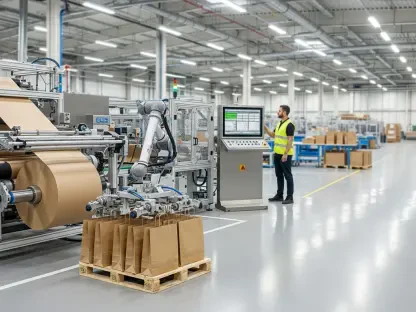In an era where environmental sustainability is no longer just a buzzword but a critical imperative, the eco-friendly rubber process oil market stands at the forefront of industrial transformation, driven by the urgent need to balance performance with reduced environmental harm. As industries worldwide grapple with this dual challenge, rubber process oils—essential additives that enhance the processing and durability of rubber products like tires and automotive components—are undergoing a significant shift. The move away from traditional oils laden with harmful Polycyclic Aromatic Hydrocarbons (PAHs) toward greener alternatives such as Treated Distillate Aromatic Extract (TDAE) and bio-based oils signals a profound change. This market, projected to grow substantially from 2025 to 2034, is driven by stringent global regulations, rising consumer demand for sustainable materials, and the urgent need to lower carbon footprints. From the tire industry’s dominance to the rapid rise of electric vehicles (EVs), the dynamics shaping this sector are as complex as they are promising. This article delves into the key drivers, challenges, opportunities, and regional trends that define the landscape, offering a comprehensive look at how sustainability is reshaping industrial practices.
Market Drivers and Emerging Trends
Sustainability as a Core Driver
The push for sustainability is the bedrock of growth in the eco-friendly rubber process oil market, with environmental awareness and regulatory frameworks acting as powerful catalysts. Governments and international bodies, particularly through policies like the European Union’s REACH framework, are enforcing strict guidelines that compel manufacturers to abandon hazardous high-PAH oils in favor of safer, low-toxicity alternatives. This regulatory pressure is not merely a compliance hurdle but a transformative force, reshaping supply chains and production methods across the rubber industry. Companies that fail to adapt risk losing market share and facing penalties, while those embracing eco-friendly solutions gain a foothold in an increasingly green-conscious market. Beyond regulations, public sentiment is also a significant driver, as consumers demand transparency and accountability from brands, pushing industries to prioritize environmental responsibility over short-term cost savings.
This shift is particularly evident in how industries are redefining their operational priorities to align with global sustainability goals. The adoption of eco-friendly oils, such as bio-based variants derived from renewable resources, reflects a broader commitment to reducing carbon emissions and minimizing ecological harm. These oils are not just a response to external pressures but also a proactive strategy to future-proof businesses against tightening environmental standards. Furthermore, the integration of advanced technologies like Artificial Intelligence (AI) in production processes is enhancing the efficiency of manufacturing these oils, ensuring consistent quality while cutting down on energy waste. This technological synergy with sustainability objectives underscores a pivotal trend: the market is evolving not just to meet current demands but to anticipate and shape future expectations.
Demand Surge in Key Sectors
The tire and automotive industries remain the cornerstone of demand for eco-friendly rubber process oils, collectively accounting for over 75% of market consumption as of recent data. The tire sector, in particular, holds a commanding position due to its sheer scale and the critical need for sustainable materials that enhance performance metrics like rolling resistance and longevity. With global vehicle production continuing to rise, especially in emerging markets, the need for high-performance, environmentally safe tires is more pressing than ever. This demand is further amplified by the rise of electric vehicles, which require specialized tires designed to handle unique weight distributions and efficiency requirements, all while adhering to strict environmental criteria.
Beyond tires, the automotive sector extends its reliance on these oils to components such as belts, hoses, and seals, where durability and safety are paramount. The shift toward EVs and hybrid vehicles is a significant growth driver, as manufacturers seek materials that align with both performance standards and sustainability mandates. Additionally, applications are expanding into consumer goods sectors, where non-toxic materials are increasingly valued for products like footwear and household items. This broadening scope of demand highlights the versatility of eco-friendly oils and their potential to penetrate diverse markets, driven by a shared emphasis on reducing environmental impact across industries. The convergence of these sectoral needs paints a picture of a market poised for robust expansion over the coming years.
Challenges Hindering Market Progress
Cost Barriers in Production
One of the most formidable obstacles facing the eco-friendly rubber process oil market is the high cost associated with production, particularly for bio-based variants that rely on renewable feedstocks. These oils often require complex purification and processing techniques, which significantly drive up expenses compared to their traditional counterparts. For smaller manufacturers operating on tight margins, this price disparity can be a prohibitive barrier, limiting their ability to transition away from conventional oils. The challenge is compounded by the fact that while eco-friendly options offer long-term environmental benefits, the upfront investment can deter adoption in price-sensitive markets where immediate cost savings take precedence over sustainability goals.
Moreover, the economic challenge extends beyond production to the broader supply chain, where fluctuating costs of raw materials add another layer of uncertainty. The need for specialized equipment and expertise to handle eco-friendly formulations also contributes to the financial burden, particularly for companies lacking the resources to overhaul existing systems. Despite these hurdles, there is a growing recognition that as production scales up and technological innovations streamline processes, costs are likely to decrease over time. Until then, strategic partnerships and government incentives may play a crucial role in bridging the gap, enabling wider access to these sustainable solutions without compromising on financial viability.
Supply Chain and Raw Material Constraints
Another pressing challenge lies in the inconsistent availability of renewable raw materials, such as vegetable oils, which are essential for producing bio-based rubber process oils. Supply chain disruptions, often influenced by seasonal variations, geopolitical factors, or competing industrial demands, can lead to shortages that force manufacturers to revert to less sustainable alternatives during critical production cycles. This unpredictability not only undermines the reliability of eco-friendly options but also poses a risk to long-term market stability, as companies struggle to maintain consistent output levels in the face of resource scarcity.
Addressing these supply issues requires a multifaceted approach, including diversifying sourcing strategies and investing in alternative feedstocks that are less susceptible to external fluctuations. Additionally, the development of localized supply networks could mitigate some of the risks associated with global dependencies, ensuring a steadier flow of materials. While these solutions demand time and investment, they are essential for building resilience into the market. The interplay between cost and supply constraints highlights a critical tension: achieving sustainability in rubber process oils is as much about logistical innovation as it is about technological advancement, underscoring the need for a holistic strategy to overcome these barriers.
Opportunities Shaping the Future
Expansion in Electric Vehicle Markets
The rapid growth of the electric vehicle market presents a transformative opportunity for eco-friendly rubber process oils, as EV manufacturers prioritize sustainable materials to meet both performance and environmental standards. Tires for electric vehicles, for instance, must be engineered to handle higher torque and unique weight distributions while minimizing rolling resistance to maximize battery efficiency. Eco-friendly oils play a pivotal role in achieving these goals, offering formulations that enhance durability and reduce environmental impact. As EV adoption accelerates globally, the demand for such specialized components is expected to surge, positioning this sector as a key growth driver over the next decade.
This opportunity extends beyond tires to other automotive applications, where eco-friendly oils are increasingly used in components critical to EV performance. The alignment with broader sustainability trends in transportation, including hybrid and alternative fuel vehicles, further amplifies the potential for market expansion. Governments and industry stakeholders are also supporting this shift through incentives and policies that encourage the adoption of green technologies, creating a favorable environment for investment. For companies in the rubber process oil market, tapping into the EV space is not just a chance for growth but a strategic imperative to stay competitive in an evolving industrial landscape.
Sustainability as a Competitive Edge
Embracing eco-friendly rubber process oils offers companies a distinct competitive advantage, allowing them to differentiate their products in a crowded marketplace. By aligning with sustainability trends, businesses can command premium pricing for their offerings, appealing to a growing base of eco-conscious consumers and corporate clients who prioritize environmental responsibility. This shift is particularly impactful in industries like consumer goods, where non-toxic materials are becoming a key selling point for products ranging from footwear to packaging, reflecting a broader societal move toward greener choices.
Furthermore, adopting sustainable practices enhances brand reputation, fostering loyalty among customers and stakeholders who value ethical and environmentally sound operations. Companies that position themselves as leaders in this space can also attract partnerships and collaborations with like-minded organizations, amplifying their market reach. This strategic focus on sustainability is not merely a response to regulatory demands but a proactive move to build long-term resilience against future market shifts. As consumer preferences continue to evolve, the ability to offer eco-friendly solutions will likely become a defining factor in maintaining relevance and achieving sustained growth.
Segment-Specific Insights and Analysis
Dominance of TDAE and Rise of Bio-Based Variants
Among the various types of eco-friendly rubber process oils, Treated Distillate Aromatic Extract (TDAE) stands out as the market leader, holding a significant share due to its stability and compliance with stringent regulatory standards. Widely used in tire manufacturing, TDAE enhances critical performance aspects such as traction and rolling resistance, making it a preferred choice for producers aiming to balance environmental safety with operational efficiency. Its established presence in the market is a testament to its reliability, particularly in applications where safety and durability are non-negotiable, positioning it as a cornerstone of current industry practices.
In contrast, bio-based and low-PAH oils are emerging as the fastest-growing segment, driven by their minimal environmental footprint and alignment with global sustainability goals. These alternatives appeal to manufacturers in the tire and polymer industries who are under increasing pressure to adopt renewable solutions. Although challenges like higher production costs persist, the momentum behind bio-based oils is undeniable, fueled by technological advancements that improve their viability. As research continues to refine these formulations, their adoption is expected to accelerate, potentially reshaping market dynamics by offering a greener path forward for rubber processing.
Tire Applications and Polymer Processing Growth
The tire industry remains the dominant application for eco-friendly rubber process oils, reflecting its massive scale and the urgent need for sustainable materials that meet both performance and regulatory demands. These oils play a crucial role in extending tire life, improving safety, and reducing environmental risks associated with traditional aromatic oils. As global tire production expands alongside vehicle manufacturing, the reliance on eco-friendly solutions becomes even more pronounced, driven by both original equipment and replacement markets seeking to align with stricter environmental standards.
Meanwhile, polymer processing emerges as the fastest-growing application segment, showcasing the versatility of eco-friendly oils in enhancing efficiency and elasticity across a range of products. From consumer goods to industrial packaging, these oils are gaining traction for their ability to improve material properties while adhering to safety requirements. This growth is particularly notable in markets where non-toxic materials are becoming a competitive differentiator, reflecting a shift in how industries beyond automotive are beginning to prioritize sustainability. The expanding scope of applications underscores the potential for eco-friendly oils to influence a wide array of sectors over the coming years.
Regional Market Dynamics
Asia Pacific’s Unrivaled Leadership
Asia Pacific holds a commanding position in the eco-friendly rubber process oil market, driven by its status as a global manufacturing powerhouse. With a robust automotive production base and cost-effective operations, the region benefits from high demand across key industries like tires and automotive components. The presence of extensive export networks further solidifies its dominance, as manufacturers cater to both domestic and international markets. This leadership is underpinned by a combination of scale and economic advantages, making Asia Pacific a critical hub for market activity.
Additionally, the region’s ability to adapt to regulatory changes and sustainability trends enhances its competitive edge. While challenges such as environmental compliance costs exist, the sheer volume of production and demand ensures that Asia Pacific remains at the forefront of market growth. Investments in infrastructure and technology are also helping to address production inefficiencies, positioning the region to maintain its lead even as global standards evolve. The interplay of these factors highlights why Asia Pacific continues to shape the trajectory of eco-friendly rubber process oils on a worldwide scale.
North America’s Accelerated Expansion
North America is experiencing the fastest growth in the eco-friendly rubber process oil market, propelled by a strong emphasis on environmental regulations and technological innovation. Stringent laws governing emissions and material safety are driving manufacturers to adopt greener alternatives, aligning with broader societal and corporate commitments to sustainability. This regulatory environment, coupled with consumer demand for eco-conscious products, creates a fertile ground for market expansion, particularly in automotive and consumer goods sectors.
Innovation plays a central role in this growth, as North American companies invest heavily in research and development to refine eco-friendly oil formulations and production processes. The focus on integrating cutting-edge technologies, such as AI for process optimization, sets the region apart as a leader in market evolution. Additionally, the rising popularity of electric vehicles and sustainable consumer products amplifies demand, positioning North America as a dynamic player. This rapid progress reflects a unique blend of policy, technology, and market readiness that is likely to influence global trends in the years ahead.
Reflecting on Market Evolution
Looking back, the journey of the eco-friendly rubber process oil market reveals a remarkable transformation, as industries adapted to the pressing need for sustainability while navigating complex operational challenges. Regulatory frameworks like the EU’s REACH played a defining role, compelling a shift away from hazardous materials toward safer alternatives that redefined industrial norms. The tire and automotive sectors stood as pillars of demand, their significant market shares underscoring the critical role of eco-friendly oils in meeting both performance and environmental goals. Technological strides, particularly in AI-driven production, addressed efficiency concerns, even as high costs and supply constraints tested the market’s resilience. Regionally, Asia Pacific’s dominance and North America’s rapid ascent painted a picture of diverse yet interconnected growth patterns. Moving forward, stakeholders can capitalize on emerging opportunities by investing in scalable production solutions, fostering supply chain stability, and targeting high-growth areas like electric vehicles. Prioritizing innovation and strategic partnerships will be key to overcoming lingering barriers, ensuring that the market’s sustainable evolution continues to gain momentum.









